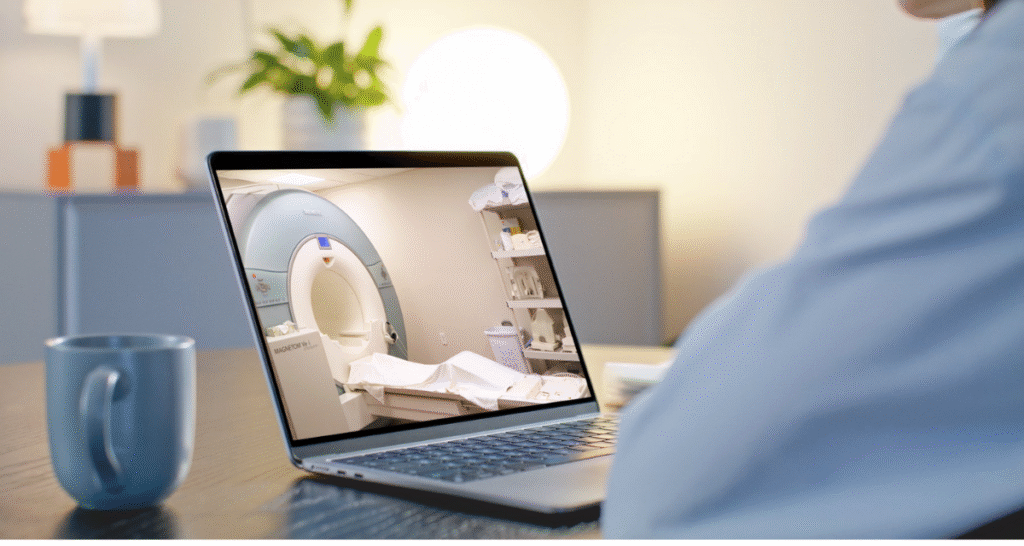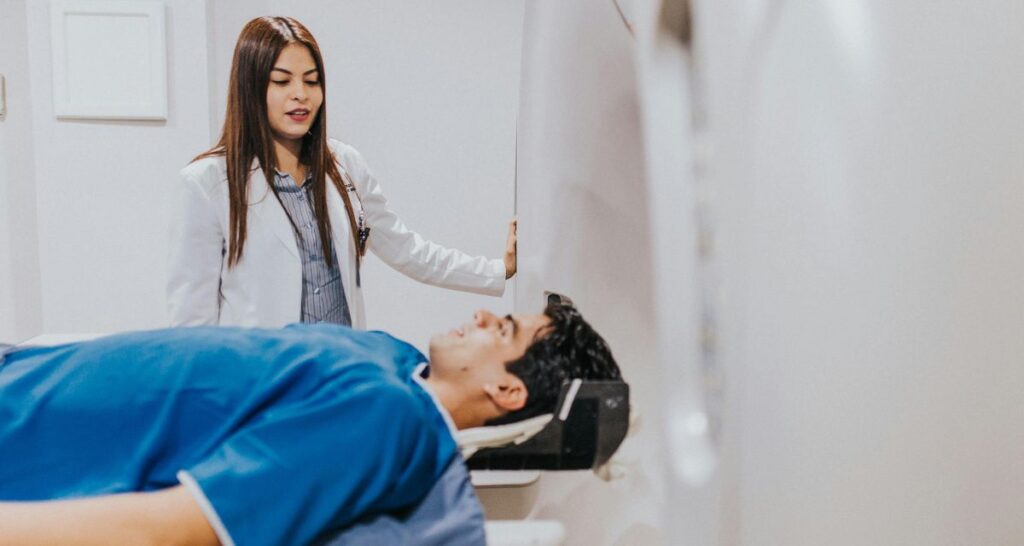Athletes and Active Individuals: How MRI Can Keep You in the Game
MRIS, Radiology, Scans, Athletes, Sports injury Athletes and Active Individuals: How MRI Can Keep You in the Game Written by: Admin June 1, 2025 Athletes and Active Individuals: How MRI Can Keep You in the Game It can be frustrating to get injured while playing your favorite sport—whether it’s a fall, trip, or sudden hit—leaving you with pain in your knee, elbow, head, or another area, without knowing exactly what’s wrong. Over 8.6 million sports and recreation-related injuries occur in the U.S. each year (CDC, National Health Statistics Report). Many people brush off sports injuries if there are no major immediate concerns. A slight pull, mild swelling, or lingering discomfort often gets chalked up to “just soreness” — until it doesn’t go away. Others delay seeking help simply because of long wait times to see a physician or get imaging approved. In fact, 1 in 3 athletes continue playing through pain due to fear of missing games or long wait times for care. Small issues can often turn into serious setbacks. That’s why seeking medical attention and getting scanned promptly after a sports injury is critical—not just for immediate relief, but for long-term performance and health. In this blog, we will dive deeper into sports injuries, typical types of injuries, and how medical imaging can make all the difference. Why Early Imaging Matters Many injuries involving ligaments, tendons, or soft tissue may not present with severe symptoms right away. However, delaying diagnosis can worsen the injury, lead to improper healing, or increase the risk of re-injury. An MRI is a powerful diagnostic tool that can detect subtle or hidden damage—such as microtears, inflammation, or stress fractures—that X-rays often miss. Identifying the root cause early allows athletes to begin a targeted treatment plan, reduce downtime, and avoid chronic pain or long-term joint issues. At USCAN, we eliminate delays by offering fast, focused MRIs with no doctor’s referral needed. We provide same-day or next-day appointments, all with access to an on-site physician, so you can take action right away. Whether you’re a competitive athlete or a weekend warrior, early imaging means smarter recovery, faster return to activity, and better long-term outcomes. Common Sports Injuries: What Athletes of All Ages Should Know Sports injuries can happen to anyone—from youth athletes to active adults and weekend warriors. While every sport and age group carries its own risks, some injuries are more common than others. Recognizing symptoms early helps prevent minor issues from becoming major problems. Figure 1: Common sports injuries by age group The Most Common Sports Injuries (All Ages) Sprains and Strains – Especially in ankles, knees, and wrists. Occur when ligaments or muscles are overstretched or torn. Tendonitis – Common in repetitive-motion sports like tennis, baseball, or running. Torn Ligaments (ACL, MCL) – Seen in high-impact sports like basketball, football, or soccer. Meniscus Tears – Frequent in twisting knee movements. Stress Fractures – Tiny bone cracks from overuse, especially in runners or dancers. Shin Splints – Common in runners or athletes who increase training too quickly. Dislocations and Fractures – Often from sudden impact or falls, affecting shoulders, elbows, fingers, and wrists. Concussions – Caused by collisions or falls, common in contact sports. Age-Specific Trends: Youth (Ages 17 and under): Overuse injuries from playing the same sport year-round Concussions in football, soccer, and hockey 2 million sports injuries per year (U.S. high school athletes) Adults (Ages 18–40): Knee and shoulder injuries from weightlifting, CrossFit, or recreational leagues Lower back pain from running, cycling, or HIIT workouts Tendonitis from overuse or poor form Adults Over 40: Joint and tendon injuries (knees, hips, shoulders) from decreased flexibility Tennis/golfer’s elbow, rotator cuff tears in sports like golf or pickleball Soft tissue tears due to reduced muscle elasticity Why Athletes Often Brush Off Sports Injuries (And Why That’s Risky) For many athletes—casual, competitive, or just active—brushing off pain is second nature. Phrases like “It’s just a strain” or “I’ll walk it off” are common. Since many injuries don’t cause immediate swelling or sharp pain, they’re easy to ignore… until they start affecting performance or daily movement. This mindset is especially common among those who: Don’t want to miss games or workouts Assume the injury will heal on its own Are frustrated by delays in traditional healthcare But the reality is, some of the most serious injuries start small. Small Injuries That Can Lead to Big Problems Mild Knee Pain → ACL or Meniscus Tear A small pop or twist might feel like a strain. Continued use can worsen the damage. Sore Shoulder → Rotator Cuff Tear Repetitive overhead motion causes micro-tears that worsen without treatment. Shin Splints → Stress Fracture Ignoring pain along the shin can lead to a full fracture requiring extended rest. Heel or Ankle Pain → Achilles Rupture Ongoing tightness without intervention can result in a full tear and surgery. Lower Back Tightness → Herniated Disc What starts as stiffness can evolve into chronic nerve pain and mobility issues. The Waiting Game: Why Traditional Healthcare Takes So Long In most healthcare systems, it can take days—or even weeks—to: Schedule a primary care visit Get a referral Wait for insurance approval Book the actual MRI Receive and review the results That adds up to 3–4 weeks just to understand what’s wrong—a time when your injury could worsen. These delays happen because traditional healthcare is built for insurance processes, not patient speed. That’s where USCAN is different. How USCAN Helps Athletes Recover Faster We built USCAN to simplify the process, reduce wait times, and give you the clarity you need now. Here’s what to expect: Instant MRI Access – no referral needed, no extended wait times On-site Physician Review – allows patients to know what’s wrong/or if patients can return to regular routines and what to do before leaving the building Focused, Fast Imaging – Our targeted body part scans take just 15-30 mins. Full head to pelvis scans can take anywhere between 45-60 mins. Same-Day or next
Athletes and Active Individuals: How MRI Can Keep You in the Game Read More »




